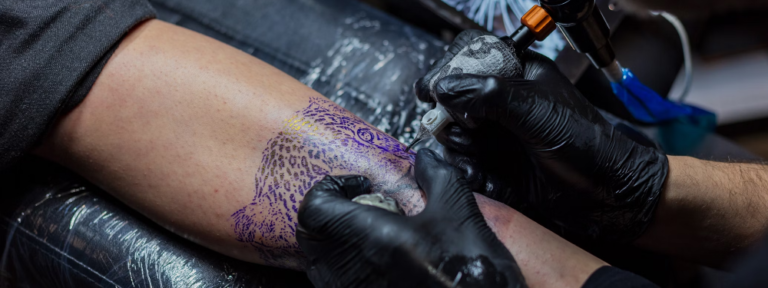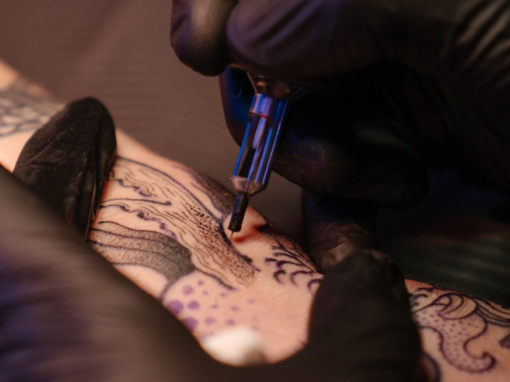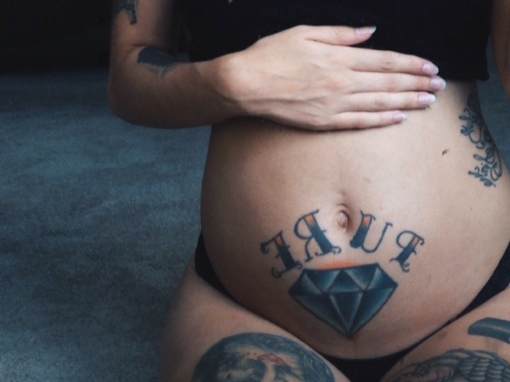In today’s world, technologies are evolving faster and faster, making our lives much easier. Tattoos have long been part of both culture and personal expression. But there are situations when the tattoo is no longer liked, seems unfashionable or simply done unprofessionally and you want to remove it.
Tattoo removal is not as complicated and painful as it may seem. The main thing is to understand how this procedure works, whether you have any contraindications for two types of removal: medical and laser, and decide for yourself whether you really want it.
Actually, in this article, we will speak more about laser type as this is the safest and the most effective method. So if you consider medical removal being the best, think twice. Maybe you will find out that laser is a much better option for you. Therefore, let’s start exploring this topic right now.
Find a Tattoo Artist
Use the search form below to find an artist by their name, location, or style of work.
[aws_search_form]
Use the interactive USA map below to open a new page with all tattoo artists from a certain city or state. Hover on the state to see a hint, do the same with a marker to read the explanation on following steps.
5 Types of Laser Tattoo Removal
Laser tattoo removal is effective due to the phenomenon of selective photothermolysis — selective destruction of the coloring pigment of images under the influence of high temperatures. The light energy of most lasers does not damage the skin surface. Its impulses affect the tattoo pigment, causing it to split into microparticles, which are absorbed by macrophages (cells within tissues) and excreted from the body naturally.
| What tattoos it removes best / how does it work | |
| Laser type: Ruby Wavelength: 694 nm Pulse duration: 3 ms Penetration depth: 1 mm | Cannot affect old tattoos. In some cases, for example, when you have skin diseases or make this procedure against contradictions it can lead to complications in the form of burns, scars. Not suitable for removing permanent makeup. Removes well. Superficial black, dark gray, dark green, and dark blue tattoos. |
| Laser type: Diode Wavelength: 792-1030 nm Pulse duration: 400 ms Penetration depth: 2-3 mm | This procedure is effective but you should choose the right master for doing it. If a laser is used on the maximum power, its beam hits the tattoo, a deep burn is immediately formed, and the darker the tattoo pigment, the deeper and more serious the damage will be. Further, at this place, there will be depressions on the skin. The situation can be corrected no earlier than 6 months after laser exposure. The procedure is suitable for any kind of tattoo, but best for black. |
| Laser type: Alexandrite Wavelength: 755 nm Pulse duration: 300 ms Penetration depth: 1.8 mm | Removes superficial tattoos. Works only with dark shades, it is almost practically powerless in front of warm colors and red. The millisecond mode of operation damages not only the tattoo pigment but also the surrounding tissues. So if you have a problem skin or any contradictions, it’s better to avoid this procedure because there can be all the ensuing consequences — - burns, scars, hypopigmentation. |
| Laser type: Neodymium Wavelength: 532 nm, 1064 nm Pulse duration: 10 ms Penetration depth: 1 - 6 mm | For tattoos of warm or red shades, the wavelength of 532 nm is used, for dark — 1064 nm. The laser beam is absorbed by the tattoo pigment and breaks it down into smaller particles, which are removed from the body through the lymphatic system. Already after the first exposure, a noticeable lightening of the tattoo pigment is observed. What about an eyelid tattoo, it can be removed in one procedure. The duration of a nanosecond pulse is not enough to damage healthy skin, so this type of laser is likely safe for tattoo removal. |
| Laser type: Picosecond Wavelength: 30-300 nm Pulse duration: 50 ms Penetration depth: 2 mm | The picosecond laser emits a pulse that breaks the pigment into small molecular pieces in ultra-short duration — even if it is a light shade, for example, yellow, blue, pink, it’s very effective. And dark shades such as black, blue, brown are removed quickly and without difficulty. In this case, the cells of the skin itself are not affected and remain intact. |
To summarize a bit, Diode and Alexandrite lasers are not as safe as others. If a master says that they have one of these and no other options, you better take care of your skin and find another master. Of course, you can use one of these two types if you want or need this kind of laser removal but there are better options. So if you have no skin diseases or any special contradictions, we recommend you using Ruby, Neodymium, or Picosecond laser to avoid any serious damages.
🩹 5 Steps for Laser Tattoo Removal
- The first and most important step is to consult a specialist. Visit a cosmetologist to find out if you have any contraindications to tattoo removal.
- Before the procedure, you should avoid exposure to direct sunlight, as the tattoo may become more sensitive to the laser. Try to reduce your smoking dose and if there are inflammations and wounds on the skin, the procedure should be postponed.
- Before the removal, the treatment of the skin with an antiseptic solution should be is done. If necessary, apply a cooling anesthetic gel. It is obligatory to wait about 15-30 minutes while the antiseptic will act.
- Now laser tattoo removal can be started. This process in one zone lasts on average 10-30 minutes.
- Medium tattoos take about 30-45 minutes, large — 1 hour or longer. You may need several sessions to remove complex or large tattoos.
- After the procedure, the beautician treats the area with an antiseptic and panthenol and lets the client go home. Also, he should give recommendations for further skincare.
Contraindications to Laser Tattoo Removal
Your health and safety must be a priority in this kind of procedure. So it’s better to ensure you can do it without any negative consequences.
Contraindications to laser removal include the following:
- Inflammation, infection, or damage to the skin in the planned laser treatment;
- Acute chronic conditions;
- Acute infectious diseases;
- Tendency to keloid scars;
- Pregnancy, lactation;
- Oncological diseases;
- Diabetes mellitus in the stage of decompensation;
- Acute chronic conditions.
How Many Sessions Are Needed
The simplest tattoos are removed in 2-4 procedures with an interval of 4-8 weeks between them. Removing a large tattoo will require a longer series of procedures, with breaks of 8 weeks or more. So, the removal of professional tattoos usually takes 6-10 procedures.
What Can Be the Complications After Laser Tattoo Removal
In general, if you have chosen a good master and did not have any contradictions, then everything should go well and without negative consequences. According to statistics, only 5% of people have scars or other problems after laser tattoo removal.
- Burn
In fact, this complication is possible only with a faulty device or incorrect operation of the master. On the skin, a burn is manifested by swelling and redness. Later, blisters may appear. The consequences of burns can be scars, hyper-, and hypopigmentation.
- Swelling and itching (edema)
Edema occurs due to tissue trauma and is a normal reaction with any laser removal. Itching is usually the result of an allergic reaction to pigment particles or laser exposure. In such cases, antihistamines are recommended. With proper symptomatic treatment, both complications disappear within a few days without consequences.
- Redness (erythema)
This reaction is absolutely normal and occurs during the procedure. It can stay for several hours and the redness may remain for 1 to 4 weeks. You should not worry, because this is an individual reaction of the body.
- Hypopigmentation
In general, it occurs in 4-5% of cases and gradually disappears within 2-6 months. This complication occurs due to deep trauma to the skin in people with protein deficiency. To avoid this, it is important to consult with your doctor and find out in advance if you have this symptom.
- Hyperpigmentation
Can occur when removed with any type of laser. Hyperpigmentation of the skin manifests itself in the form of excess pigment deposition. Its reasons are different: prolonged intoxication of the body, problems with the vitamin process, pregnancy, diseases of the liver and biliary tract, and non-compliance with recommendations after the procedure.
- Hematoma
It is a normal reaction. If the pigment ruptures, capillaries can be damaged and bruises can occur at the removal sites. It passes completely without a trace.
- Infection
It can occur with improper care after the procedure, or if the integrity of the skin has been violated. Therefore, carefully follow the doctor’s recommendations.
- Scarring of tissues
Occurs with serious tissue damage, mostly with deep dissection of soft tissue with a laser. If you don’t want to have this, pick a professional master, who can make everything as carefully as possible and with minimal damage.
How to Care For Skin After Tattoo Removal
It is not enough to just take care of your health before or during the procedure. Skincare after removal is also very important. If you want to protect your skin from the negative effects (irritation, scars, and even infection), follow these rules:
- Do not wet the laser-treated area for 24 hours.
- Within 48 hours, do not visit the bathhouse, solarium, gym, swimming pool; do not swim in open water.
- Protect the treated area from rubbing, mechanical stress, heating, and injury.
- Within 7 days, clean the affected area with a solution of Chlorhexidine and lubricate with an anti-burn agent — Panthenol, Bipaten, Pantestin, 2 times per day.
- During the entire period of tattoo removal, protect the treated area from exposure to ultraviolet rays.
- It is forbidden to rip off, open, and comb off the formed crusts, scabs, blisters, and peeling.
- It is forbidden to shave the treated surface — 14 days.
- You should drink more water, eat healthy right for at least two weeks.
- You should stop smoking and drinking alcohol for at least 10 days.
6 Medical Methods of Tattoo Removal
⚕️ Dermabrasion
It is good for medium tattoos. Mechanical removal (scraping) of the upper layer of the skin using a continuously rotating cutter with an abrasive coating. A doctor does this with gentle pressure and it can take even a few minutes if a tattoo is small. If this procedure is very painful for you, it can even be done under general anesthesia. Is pretty safe and shouldn’t leave a scar after the procedure.
⚕️ Surgical Excision
Performed with a dermatome is a special tool capable of removing the top thin layer of skin. Not the most effective and rather unpleasant procedure, after which a scar may remain. But is very good for small tattoos and offers improved precision.
⚕️ Chemical Peeling
Good for medium and big tattoos. “Burning” the tattooed skin area using various drugs — trichloroacetic acid, phenol, etc. It is a procedure of removing the outer layers of the skin, and with them, the tattoo ink. This type of procedure may be painful but typically does not require the use of an anesthetic. Is not the most effective and the scar can remain.
⚕️ Cryodestruction
It is perfect for any type of tattoo. “Freezing” of the upper layer of the skin using liquid nitrogen, followed by the rejection of the skin area with the tattoo. Cryodestruction aims tifo induce directed tissue necrosis through skin cooling and cell freezing with minimal pain and maximum effectiveness. You should choose a professional master because if you overcool the skin, a wound may appear and later even blisters. Anyway, after 1-2 months it will disappear.
⚕️ Electrocoagulation
Good for small tattoos. Thermal damage to the skin (burn) using an electric current, which leads to the subsequent rejection of the skin area along with the pattern. This method is not the most effective, if you want a medical removal, you can choose another one. But the procedure is quite safe and should not leave scars.
⚕️ Thermocoagulation
Good for any type of tattoo. Thermal damage to the skin and its subsequent rejection after treatment with continuous laser radiation. This procedure is pretty effective and shouldn’t leave scars. Although, if there is skin irritation, it will disappear in a few days.
Contraindications to Medical Tattoo Removal
There are certain contraindications against these medical methods of tattoo removal. But they are limited for individuals with keloid (pathological growth of fibrous and connective tissue, which is manifested by an aesthetic defect on the skin and other unpleasant symptoms) and hypertrophic scarring tendencies. In most cases may appear because of hormonal imbalance, metabolic disorders, and diseases of the endocrine system.
There are also general contraindications for medical removal:
- Acute cardiovascular disease;
- Frequent attacks of angina pectoris;
- Hypertension stage III;
- Skin infections in the area of the operation;
- Infectious diseases, feverish conditions.
We recommend that you do not consider the medical type of tattoo removal the best method. These techniques should be used as a last resort if you have had a bad experience with laser tattoo removal or you have contraindications against it.
To summarize everything, if you want to protect your skin as much as possible, the best and safest method of all known is laser removal.
Summary
In general, in the modern world, thanks to technology, you can easily remove a tattoo by any method: whether it’s medical or laser. Which method is best for you is only your choice. The main thing is to consult with your doctor before the removal procedure and find out whether it is safe for you to do this procedure.
FAQ
✔️ Can the Tattoo Be Completely Removed?
In most cases yes. Currently, the most effective way to remove a tattoo is a laser. For high-quality tattoo removal are required several sessions and even so, in most cases, the outlines of the tattoo remain barely visible on the skin.
📌 How Many Sessions Does It Take To Remove a Tattoo?
It all depends on the size of the tattoo. If we talk about small tattoos, 2-4 sessions are required. For large tattoos, it takes 6-8 sessions. An interval of about 4-8 weeks of skin rest is also required between them. In general, this process is slow and takes time to safely and effectively remove a tattoo.
⚡️ Does Tattoo Removal Leave Scars?
Very rarely, a patient gets scars from laser tattoo removal when proper laser protocols are followed and if a patient cares for skin properly after removal. The scar may remain when you remove a brightly colored tattoo. A powerful laser is used and penetrates the skin by 2-3 mm, it’s pretty big damage and if it is delicate skin, the scar may remain.
🔎 Is It Worth Getting Laser Tattoo Removal?
At the moment, laser tattoo removal is the safest and most effective. This procedure causes minimal damage to the skin. In turn, surgical removal can have many more negative consequences. If you do not have contraindications for laser removal, it is better to use it.









